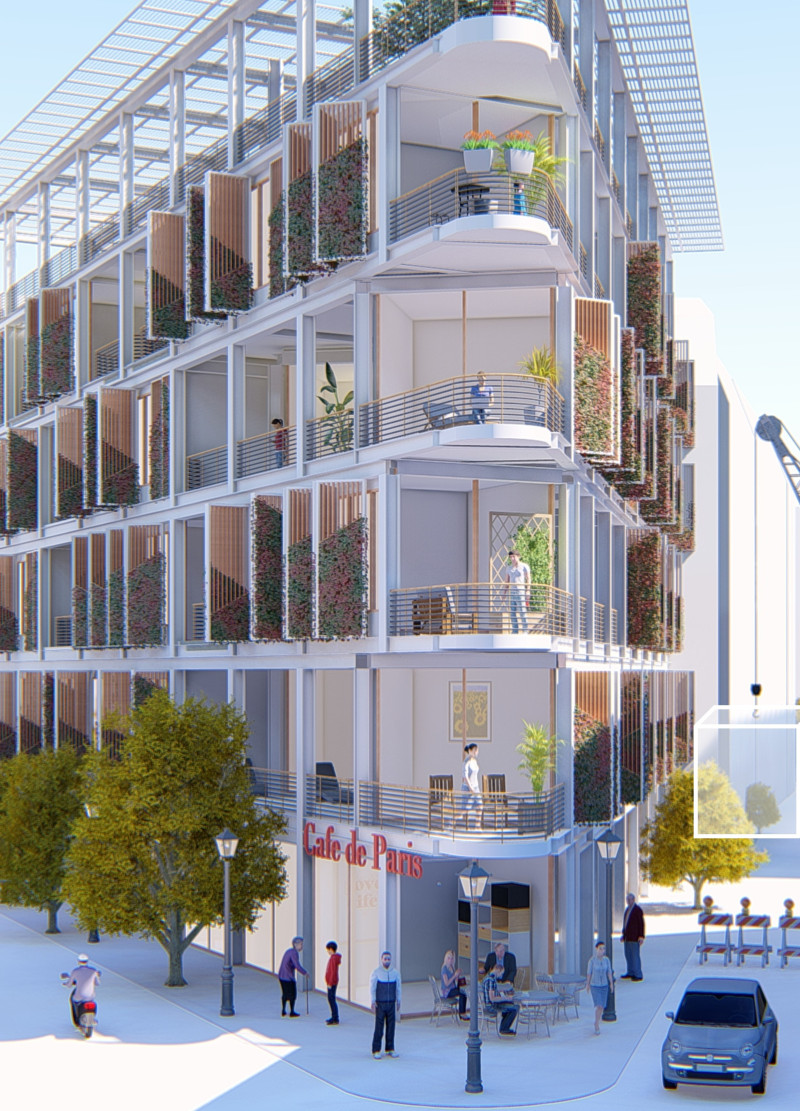5 key facts about this project
The Drawer Cabinet design is set in the urban context of Paris, aiming to provide affordable and adaptable housing solutions. The main idea is centered around a modular system made up of pre-fabricated living units. These units can be rearranged easily to meet the diverse needs of households. This approach makes it possible for the project to respond effectively to modern living requirements and the challenges of urban life.
Modularity and Flexibility
Each unit measures 4 by 4 meters, allowing for configurations that can range from 16 m² to 96 m². This flexibility means that the design can cater to single occupants as well as larger families. Residents have the freedom to customize their spaces based on personal preferences or changing circumstances. This system encourages efficient land use in cities, while also allowing for easy relocation from one area to another.
Sustainability
Sustainability is an important focus in the design. Natural light and ventilation are incorporated to enhance the living experience. Features such as solar panels and green spaces demonstrate a commitment to environmental care. These elements ensure the living areas are functional while also positively impacting the urban environment. The aim is to create a habitat that supports not just the residents, but also the surroundings.
Material Choices
The materials used in the project complement its design goals. Key components include cement boards, steel frames, gypsum roofs, steel beams, steel columns, a roof steel structure, translucent glass doors, and wood windows. These materials work together to form a strong framework. They meet the practical needs of urban living while also providing a pleasing aesthetic.
The Drawer Cabinet design encourages a sense of community among residents. It creates opportunities for interaction while allowing individuals to maintain their personal space. Thoughtful arrangements of the modular units and shared green areas foster connection within the urban environment. This approach addresses the complexities of modern housing needs with a clear understanding of how people live today.


















































